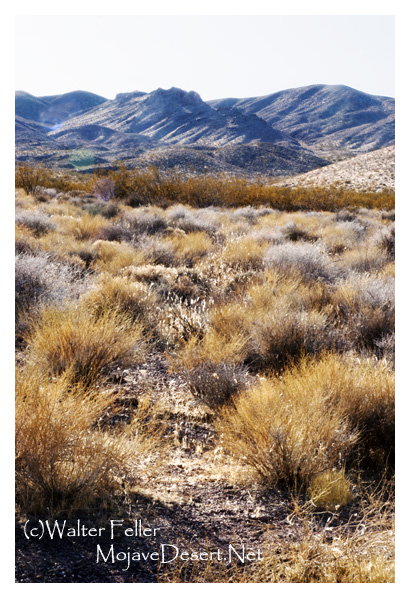Why Greenwater Moved
While the outside world is perhaps wondering zvhy the town of Greenwater is trying to be so ubiquitous, nestling for a while in the canyon, where Arthur Kunze, selected the site, and fluttering lightly over to Ramsey's wash as soon as Charly Schwab pointed his finger in that direction, and then for an indeterminate period hovering in mid-air, reluctant and hesitant as to the proper perch, many men and many factors are busily engaged in solving the destinies of the town. The outside world wonders and some of the people who came early to make Greenwater their home wonder why this blithesome town does not? settle somewhere and stay settled. It would seem where land is so plenti-" ful, where areas are large enough for a kingdom, it surely must be an easy matter to find a suitable place for a town, but these are the conclusions of the unknowing, the uninitiated, those not familiar with the necessities and pecuniary interests fliat are involved in the building of a mining town.GreenWater will be a large city. The men who, are staking their money against the prospects of the copper mines in the Funeral range near Greenwater believe that in a few years the district will have a city as large as Butte, Montana. They are certain that Greenwater will be larger than any city in Nevada. They are planning for a city of many thousands instead of hundreds of inhabitants, and because ql this they are reckoning with the conditions which the desolate mountans here present. The city must be near the mines which are being developed, but it must be so located that there is plenty of room for expansion. As a rule, mining camps, which later grow into small cities, are located in canyons, gulches, a mountain wash, or wherever the ore-bearing lodes happen to lie. Such towns have rarely room enough to expand into a city of any size. They do not need it, but the men who are building Greenwater have different plans. Their plans are for a city, and the confusion in the townsite has resulted from the different appreciation which various men have formed of the possibilities of the copper district.

The first and original location for a townsite was made by Arthur Kunze in the wash near the crest of the range and adjoining the mining claims which were purchased by Charles Schwab and his followers. As a mining camp this location was ideal. It was near the best properties, near the largest deposits of ore and sufficiently elevated to secure the coolest climate during the hot summer months. Those interested with Kunze in this townsite and in the copper properties there abided by this selection for a townsite, all except Harry Ramsey, whose one ambition in life has been to have a mining town bearing his name. Ramsey purchased early the interests of Frank McAllister, one of the original locators of the Grecnwater district, and located a townsite in the flat three miles below Greenwater proper. But his choice, despite the natural characteristics in its favor, found little favor from those entering the district until the railroad builders and the owners of the Schwab mine appeared at Greenwater. Schwab and Brock of the Greenwater Death Valley Copper Company quickly concluded that the city of Greenwater would be located more to the interest of their mine if at Ramsey, safely beyond the borders of their property, than at the location where they found it and where the city limits formed the railing for several of their shafts. Brock had learned at Tonopah that it is an expensive thing to have a city built on top of a company's mineral claims. He had no taste for a repetition of such conditions at Greenwater.
The railroad men, J. Ross Clark and Brock, during this same visit, concluded that it would be cheaper by several million dollars to build to Ramsey instead of climbing the grade to Greenwater, near the top of the range. Once these men concluded that Ramsey was a more desirable place for the city of Greenwater than the wash where Kunze had selected the townsite events happened quickly.. John Salsberry, J. V. Stewart and Wallace and Nash were approached for a consolidation of towns. Kunze had sold his interests and the thing was done. It needed only the skillful efforts of John Salsberry to break as gently as possible the news to the inhabitants of Greenwater that they must take their houses and goods and with them wander over the hills to Ramsey. This accomplished and the game was on. In a day Greenwater changed its altitude, pointed its streets in a new direction and continued merrily on its course to renown.